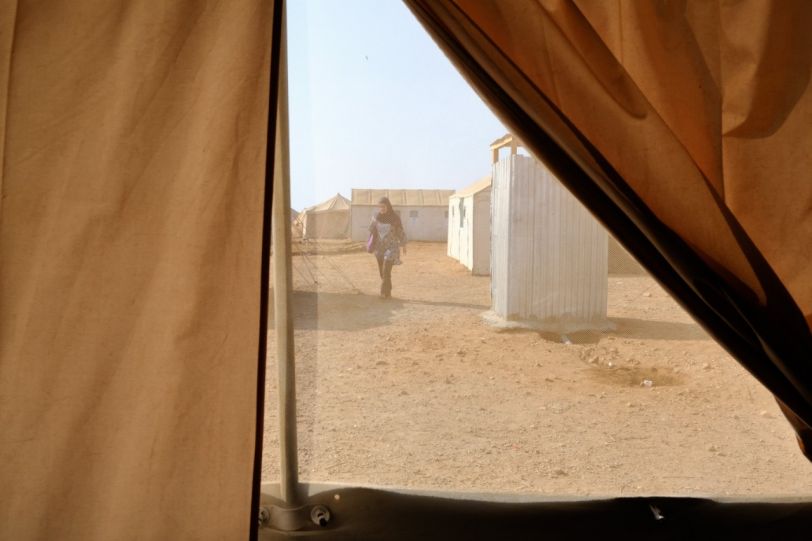NYUAD Exhibit Comes to Washington Square
A photo by Nadia Benchallal currently on display at 19 Washington Square North as part of a new photography exhibit portraying refugee life in Djibouti. The exhibition will be on display now until May 30.
February 12, 2018
A new photography exhibit portraying refugee life in Djibouti from NYU Abu Dhabi opened at 19 Washington Square North on Feb. 4. The photographs on display represent the work of professional photographer Nadia Benchallal, Yemeni refugees in Djibouti, NYUAD professor Nathalie Peutz and her students.
The twin exhibition in Abu Dhabi opened on Feb. 4 at the Project Space on the Saadiyat Island campus.
Djibouti, a small country in the Horn of Africa with a population of nearly 950,000, has taken in over 4,500 Yemeni refugees. A refugee camp called Marzaki hosts approximately 1,200 refugees, while others live in Djibouti City. While their lives in Djibouti are largely unknown, this photography project, as well as the research and studies conducted on-site by the faculty and students of NYUAD, has helped to uncover various aspects of the situation Yemeni refugees are in.
On the left side of the exhibition are black and white photographs, whereas color family portraits are on the right. The color portraits are immensely surprising. Their subjects are posing for the camera, and in several portraits –– one sees smiling, unscarred and hopeful faces –– in blithe albeit discomforting contrast with their surroundings. Some of the black and white photographs, however, show a different side of their lives. They are far more sombre, capturing open wounds from stunning angles.
The fine photographs, especially in black and white, present poignant conundrums. In one of the photographs, a girl stands innocently with a loudspeaker pressed to her mouth, with other young girls lined up behind her and a man hovering over her. Another photograph shows a man’s reflection in the rear view mirror of his motorbike, driving along a wide road in the middle of rolling fields with a group of lean men walking down one side.
The very placement of the photographs in the exhibition room gives the viewer a sense of place. The black and white photographs mirror the color photographs, and seem to give the bright colors their shadow. The aim of the exhibition is to present the life of the Yemeni refugees with dignity and represent them in the way they wish to be represented. This wish itself can raise questions, making one wonder if it is indeed a wish to conceal the harrowing truth and continue to subsist on hope and love.
Looking outside at the Washington Square Park from the sunlit room of the NYUAD exhibit makes one realize the alterity of Djibouti’s reality. The old and young, the happy and sad and the made and unmade merge in these heart-wrenching photographs, directing and calling for the lens of the world.
A version of this article appeared in the Feb. 12 print edition.
Email Devanshi Khetarpal at [email protected].
























































































































































